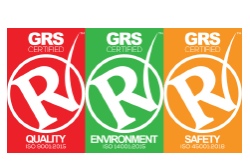Vibrating Wire Piezometer
Supply install and Overview
Vibrating Wire Piezometer is designed for accurate and long term measurement of pore water pressures in fully or partially saturated soil and rock.
Operation
The Standard Vibrating Wire Piezometer is designed for the accurate measurement of pore water pressures in fully or partially saturated soil.
The piezometer tip has an integral porous filter element containing a diaphragm type Vibrating Wire pressure transducer. A cable connects the transducer to a read-out, terminal unit or data logger. The readout can display either frequency based units, or on inputting the instrument calibration factor, it can also display engineering units.
Application
Piezometers are used in geotechnical, environmental, and hydrological applications. They can be installed in boreholes, placed in fill materials or open wells to measure water levels or pore water pressures to enable engineers to verify design assumptions and control placement of fill. Edge drilling has been involved in installing Standard Vibrating Wire Piezometer across the state in a broad sector of industries and fields ranging from mining, construction, dams, energy, government projects.
Typical applications include:
- Environmental management including landfill sites
- Monitoring of aquifers
- Monitoring of tidal effects on coastal soils
- Embankments
- Potential landslide sites
- Dewatering excavations
- Tailings lagoons
- Pumping tests
- Monitoring seepage
- Control placement of fill
- Dams
- Open mine pit stability
The standard penetration test (SPT) is an in-situ dynamic penetration test designed to provide information on the geotechnical engineering properties of soil. This test is the most frequently used subsurface exploration drilling test performed worldwide. The test procedure is described in ISO 22476-3, ASTM D1586[1] and Australian Standards AS 1289.6.3.1. The test provides samples for identification purposes and provides a measure of penetration resistance which can be used for geotechnical design purposes. Many local and widely published international correlations which relate blow count, or N-value, to the engineering properties of soils are available for geotechnical engineering purposes.
Permeability testing
Permeability can be determined by undertaking in-situ tests in boreholes or standpipe piezometers. The test method involves variable head (rising or falling) or constant head procedures and requires knowledge of the groundwater level. The type of test undertaken depends on the soil type and typically a variable head test would be carried out in relatively permeable soils and a constant head test in less permeable material.
When a permeability test takes place in a borehole, the water can flow either directly into (or out of) the soil or a perforated pipe with a gravel surround can be installed if required, to maintain the stability of the borehole and the water level can be measured via the pipe.
The test measures the permeability (k) of the soil below the groundwater level i.e. in saturated ground and because it is carried out in situ provides a more reliable result than can be determined in the laboratory.
Implementation of the test and interpretation of the results requires experience of the various test techniques and knowledge of the site ground conditions.
On some sites there may be a large local variation in permeability, for example due to horizontal layers of soils with differing permeability or discontinuities such as fissures. In this situation larger scale pumping tests can be carried out, where the water levels are measured in an array of boreholes around a central borehole from which groundwater is pumped, and the permeability is established.

